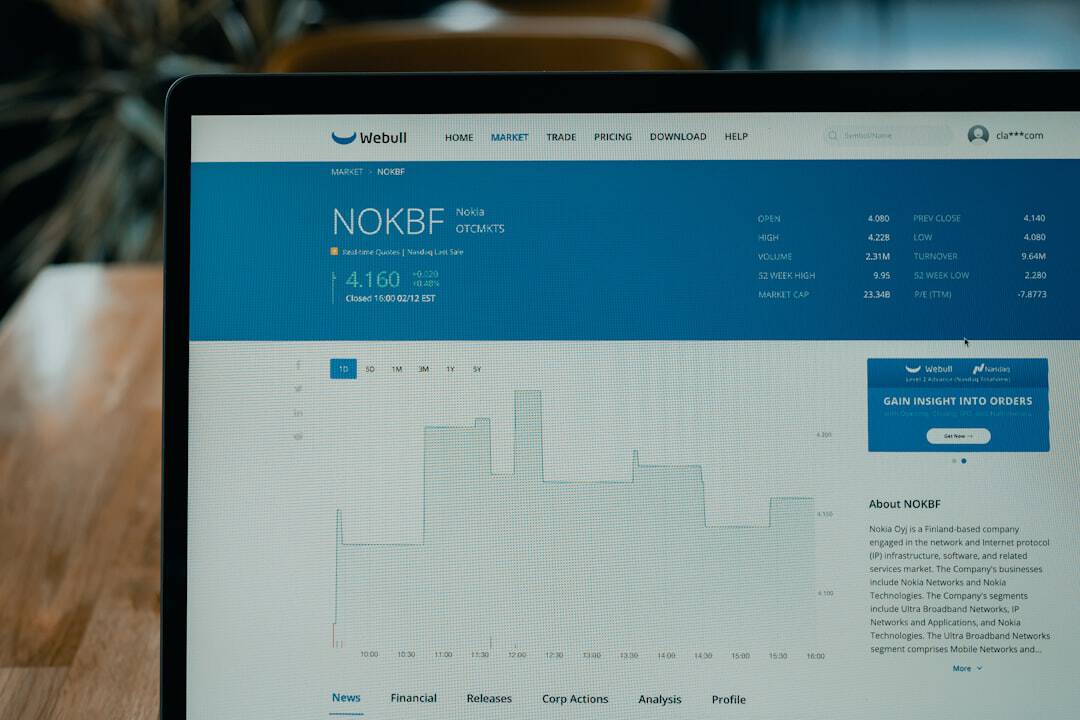Zero Trust Network Access (ZTNA) is a security model designed to address the limitations of traditional network security approaches. Unlike conventional models that rely on perimeter-based defenses, ZTNA assumes threats can originate from both internal and external sources. This model focuses on verifying the identity of users and devices before granting access to applications and resources.
ZTNA operates on the principle of least privilege, granting users access only to the specific resources necessary for their job functions. This approach minimizes unauthorized access risks and reduces the potential impact of security breaches. Additionally, ZTNA employs micro-segmentation to create isolated network segments, further limiting attackers’ ability to move laterally within the network.
A key component of ZTNA is the use of strong authentication methods, such as multi-factor authentication (MFA), to verify user and device identities. This ensures that only authorized entities can access the network and its resources. ZTNA also leverages encryption to protect data in transit between users and applications, making it more challenging for attackers to intercept and exploit sensitive information.
Key Takeaways
- Zero Trust Network Access (ZTNA) is a security model that requires strict identity verification for every person and device trying to access resources on a private network, regardless of whether they are inside or outside the network perimeter.
- The evolution of secure access has shifted from traditional VPNs to ZTNA, which provides a more secure and flexible approach to network access by focusing on identity and context-based access control.
- Cato ZTNA offers a revolutionary approach to secure access by providing a cloud-native platform that integrates networking and security, enabling organizations to simplify their infrastructure and improve their security posture.
- Implementing Cato ZTNA brings several benefits, including improved security, reduced complexity, increased agility, and better user experience, ultimately leading to cost savings and enhanced productivity.
- Organizations can overcome security challenges with Cato ZTNA by leveraging its comprehensive security features, such as application-level access control, micro-segmentation, and threat prevention, to protect against advanced cyber threats and data breaches.
The Evolution of Secure Access
The Limitations of Perimeter-Based Security
Historically, secure access was primarily focused on protecting the perimeter of the network. This approach relied on firewalls and virtual private networks (VPNs) to create a secure boundary between the internal network and the outside world. However, as the boundaries of the network have become more porous, this perimeter-based approach has become less effective at preventing unauthorized access and data breaches.
The Shift to Dynamic Security Models
In response to these challenges, there has been a shift towards more dynamic and adaptive security models. These models are designed to provide secure access to applications and resources regardless of where they are located, whether in the data center, the cloud, or on-premises.
Identity Verification and Least Privilege Access
By focusing on identity verification and least privilege access, these models are better equipped to protect against insider threats and external attacks. This approach ensures that users have access only to the resources they need, reducing the risk of data breaches and unauthorized access.
Cato ZTNA: A Revolutionary Approach

Cato ZTNA represents a revolutionary approach to secure access that is designed to address the limitations of traditional network security models. Unlike legacy approaches that rely on VPNs and other point solutions, Cato ZTNA provides a unified platform for securing access to applications and resources across the entire network. One of the key features of Cato ZTNA is its ability to provide secure access to applications regardless of their location.
Whether an application is hosted in the data center, the cloud, or on-premises, Cato ZTNA can ensure that users and devices are able to access it securely. This flexibility is essential in today’s distributed and hybrid IT environments, where applications and data are spread across multiple locations. In addition, Cato ZTNA leverages a global network of points of presence (PoPs) to provide low-latency access to applications and resources.
This ensures that users have a fast and reliable connection to the network, regardless of their physical location. By eliminating the need for backhauling traffic through a central data center, Cato ZTNA can improve performance and user experience while reducing costs. Furthermore, Cato ZTNA integrates seamlessly with Cato SASE (Secure Access Service Edge), which provides comprehensive security capabilities, including firewall as a service (FWaaS), secure web gateway (SWG), and cloud-native secure web access (CASB).
This integration allows organizations to consolidate their security stack and simplify management, while also benefiting from a unified approach to secure access.
The Benefits of Implementing Cato ZTNA
| Benefits | Description |
|---|---|
| Enhanced Security | Provides secure access to applications and resources, reducing the risk of unauthorized access. |
| Improved User Experience | Enables seamless and secure access for remote users, enhancing productivity and satisfaction. |
| Reduced Complexity | Consolidates and simplifies access control, reducing the need for multiple point solutions. |
| Cost Savings | Reduces the need for traditional VPNs and associated hardware, leading to cost efficiencies. |
| Scalability | Supports the growing needs of organizations, allowing for easy expansion and adaptation. |
Implementing Cato ZTNA offers a wide range of benefits for organizations looking to improve their secure access capabilities. One of the key benefits is improved security posture, as Cato ZTNA leverages strong authentication methods and micro-segmentation to limit the potential impact of a security breach. By verifying the identity of users and devices before granting access to applications, organizations can reduce the risk of unauthorized access and data exfiltration.
In addition, Cato ZTNA can help organizations improve their compliance with industry regulations and data protection standards. By implementing least privilege access and encryption, organizations can demonstrate that they are taking proactive steps to protect sensitive information and prevent unauthorized access. This can help to build trust with customers and partners, while also reducing the risk of regulatory fines and penalties.
Furthermore, Cato ZTNA can improve user experience by providing fast and reliable access to applications and resources. By leveraging a global network of PoPs, Cato ZTNA can reduce latency and improve performance for users, regardless of their location. This can help to increase productivity and satisfaction among employees, while also reducing frustration and support requests related to slow or unreliable network connections.
Overcoming Security Challenges with Cato ZTNA
Cato ZTNA is designed to help organizations overcome a wide range of security challenges that are inherent in today’s distributed and hybrid IT environments. One of the key challenges is securing access to cloud-based applications and resources, which can be difficult to protect using traditional network security models. Cato ZTNA addresses this challenge by providing secure access to applications regardless of their location, whether in the cloud or on-premises.
Another challenge that organizations face is ensuring that remote workers have secure access to corporate resources without compromising security. With the rise of remote work, organizations need a solution that can provide secure access to applications and data from anywhere, without increasing the risk of unauthorized access or data breaches. Cato ZTNA meets this challenge by providing secure access to applications for remote workers, while also ensuring that only authorized users and devices are able to connect to the network.
Furthermore, Cato ZTNA helps organizations overcome the challenge of managing multiple point solutions for secure access. By providing a unified platform for securing access to applications and resources across the entire network, Cato ZTNA simplifies management and reduces complexity. This can help organizations streamline their security stack and improve operational efficiency, while also reducing costs associated with maintaining multiple point solutions.
Cato ZTNA: Future Trends and Developments

Secure Access for Remote Work
As remote work continues to become more prevalent, organizations will need a solution that can provide secure access to applications and resources from anywhere, without compromising security or performance. Cato ZTNA is well-positioned to meet this need by providing fast and reliable access to applications regardless of their location.
Secure Access to Cloud-Based Resources
In addition, as organizations continue to migrate their applications and data to the cloud, there will be an increasing need for solutions that can provide secure access to cloud-based resources. Cato ZTNA is uniquely positioned to address this need by providing secure access to cloud-based applications and resources, while also ensuring that sensitive information is protected from unauthorized access.
Adapting to Evolving Cyber Threats
Furthermore, as cyber threats continue to evolve and become more sophisticated, organizations will need a solution that can adapt to new security challenges. Cato ZTNA is designed with this in mind, leveraging strong authentication methods and micro-segmentation to limit the potential impact of a security breach. As new threats emerge, Cato ZTNA will continue to evolve in order to provide organizations with the highest level of protection against cyber attacks.
Implementing Cato ZTNA in Your Organization
Implementing Cato ZTNA in your organization can provide a wide range of benefits, including improved security posture, compliance with industry regulations, improved user experience, and simplified management. To get started with Cato ZTNA, organizations should begin by conducting a thorough assessment of their current secure access capabilities and identifying areas for improvement. Once the assessment is complete, organizations can work with Cato Networks to design and implement a customized solution that meets their specific needs and requirements.
This may involve integrating Cato ZTNA with other components of the Cato SASE platform in order to provide comprehensive security capabilities across the entire network. In addition, organizations should develop a comprehensive training program for employees in order to ensure that they understand how to use Cato ZTNA effectively and securely. This may involve providing training on best practices for secure access, as well as guidance on how to recognize and respond to potential security threats.
By implementing Cato ZTNA in your organization, you can improve your security posture, enhance compliance with industry regulations, improve user experience, and simplify management. With its revolutionary approach to secure access, Cato ZTNA is well-positioned to meet the evolving needs of modern organizations in today’s distributed and hybrid IT environments.
If you’re interested in learning more about the potential impact of virtual reality on the future of technology, you should check out this article on virtual reality (VR). It discusses the various ways in which VR is being integrated into different industries and how it could shape the metaverse. This article provides valuable insights into the potential of VR technology and its role in shaping the future of the metaverse.
FAQs
What is Cato ZTNA?
Cato Zero Trust Network Access (ZTNA) is a cloud-based security solution that provides secure access to applications and resources for remote users and branch offices.
How does Cato ZTNA work?
Cato ZTNA uses a zero-trust security model to authenticate and authorize users before granting access to applications and resources. It creates a secure, encrypted tunnel between the user and the application, regardless of the user’s location.
What are the benefits of using Cato ZTNA?
Some benefits of using Cato ZTNA include improved security, simplified network management, and enhanced user experience for remote and mobile users.
Is Cato ZTNA suitable for small businesses?
Yes, Cato ZTNA is suitable for businesses of all sizes, including small and medium-sized enterprises. It provides a scalable and cost-effective solution for securing remote access to applications and resources.
Can Cato ZTNA integrate with existing security infrastructure?
Yes, Cato ZTNA is designed to integrate with existing security infrastructure, including firewalls, secure web gateways, and other security tools, to provide comprehensive protection for the network and its users.











Leave a Reply